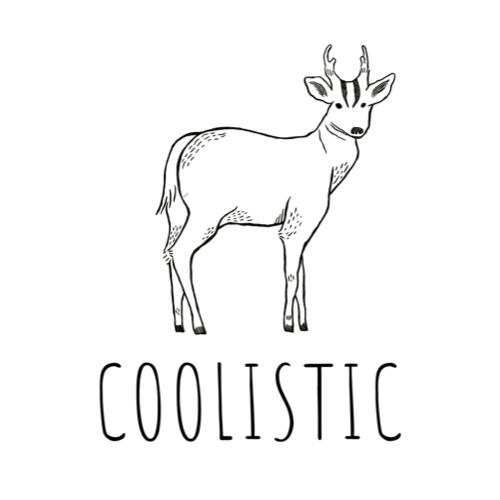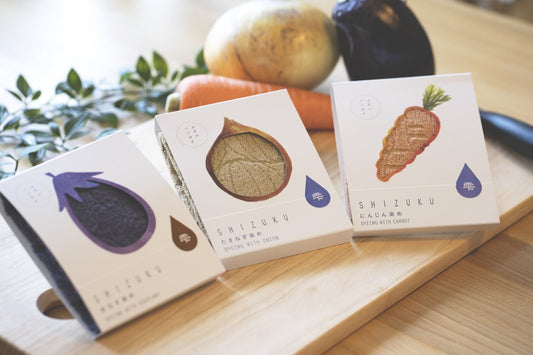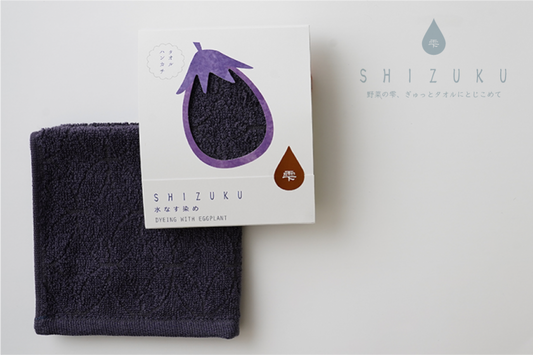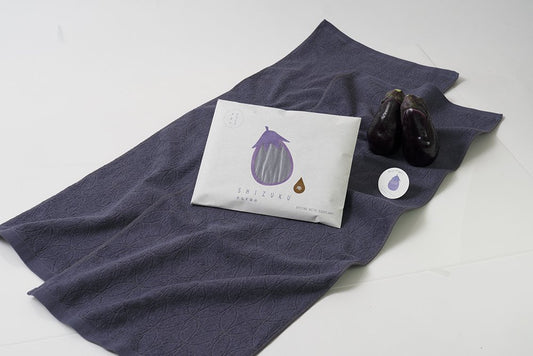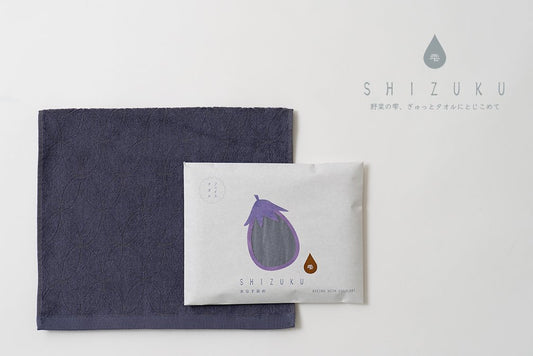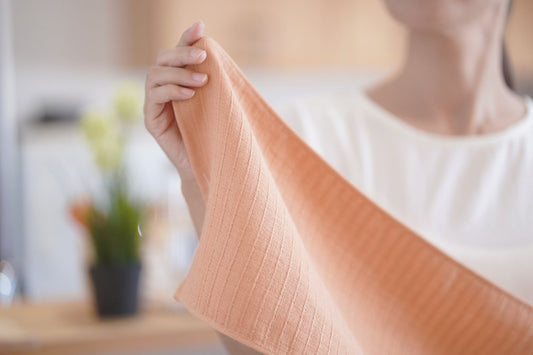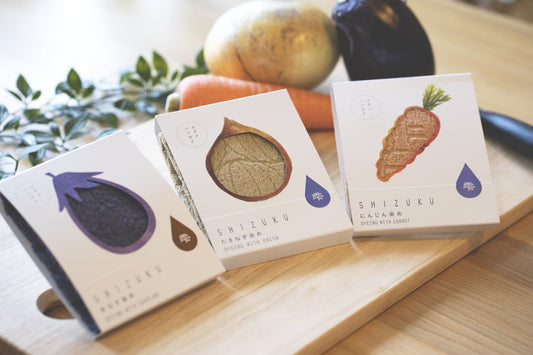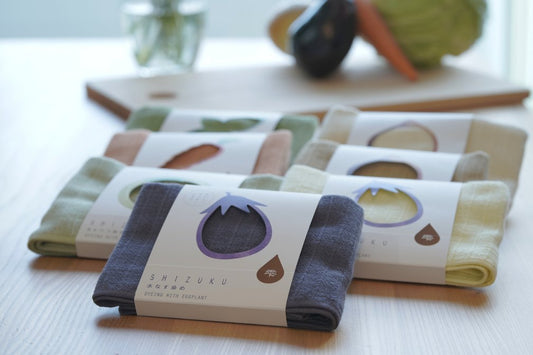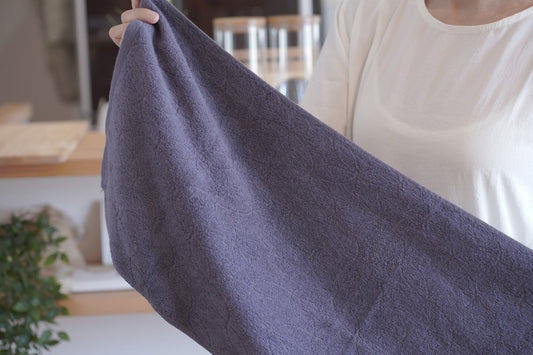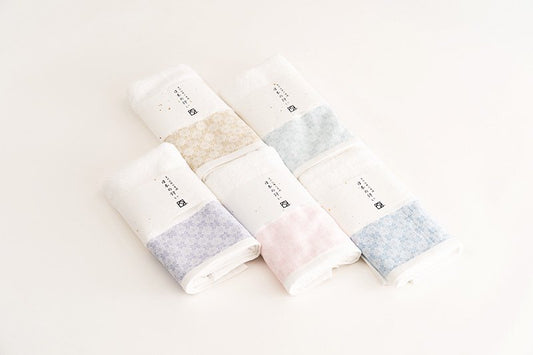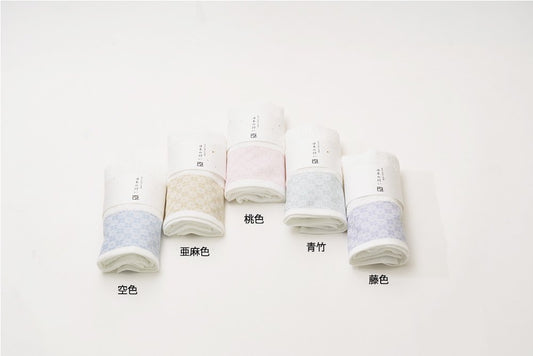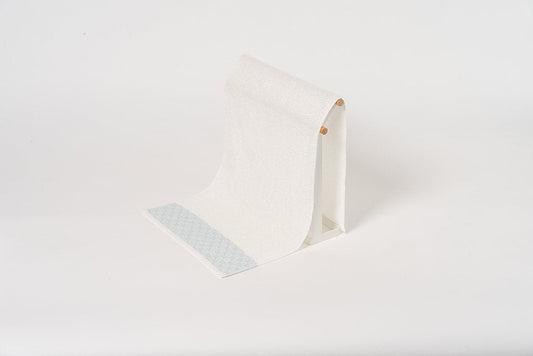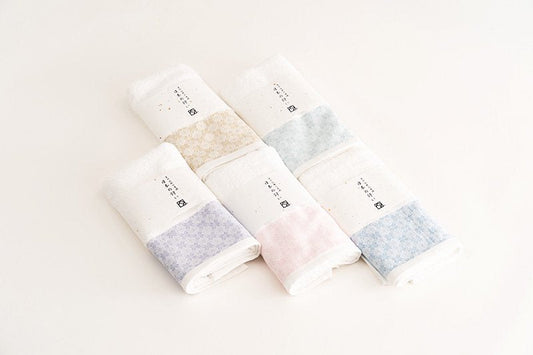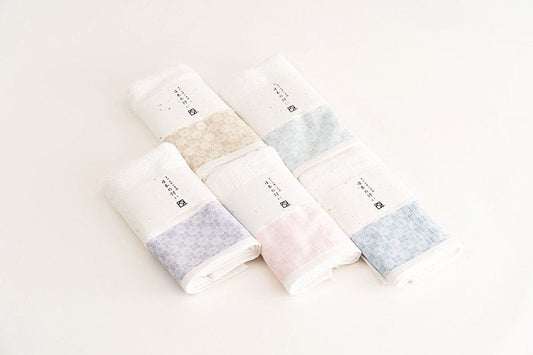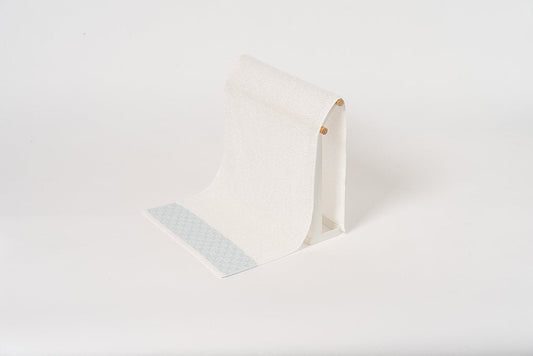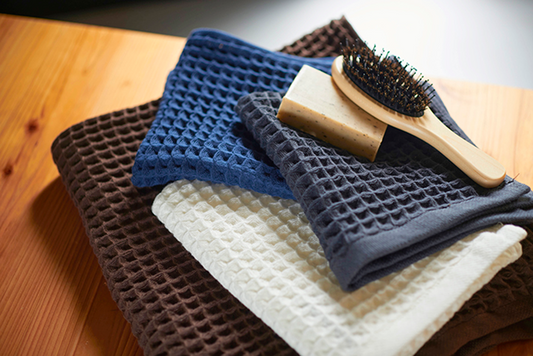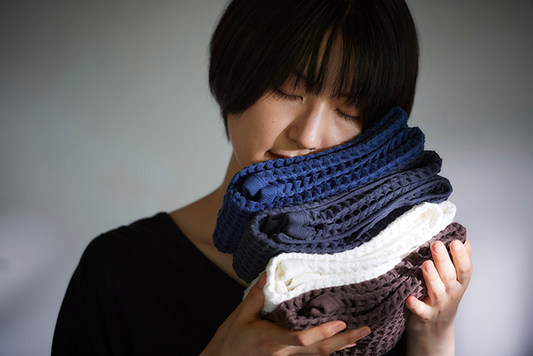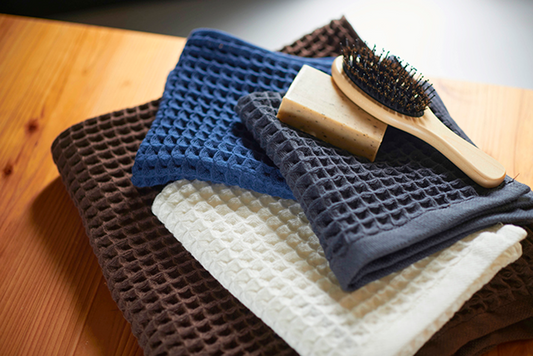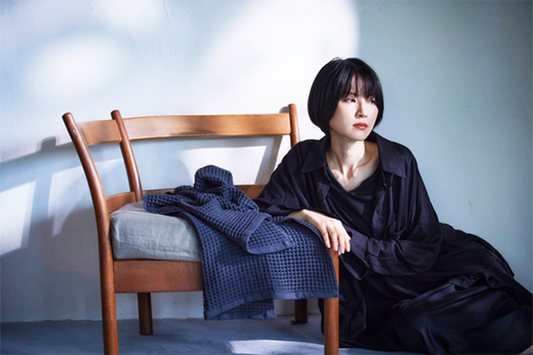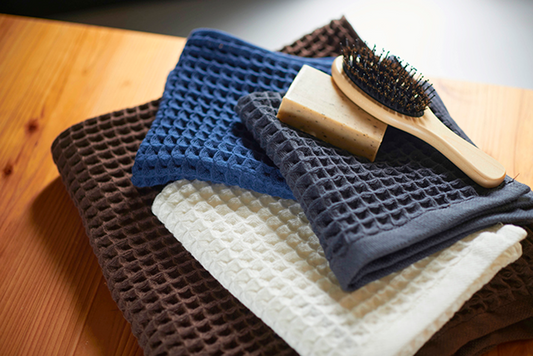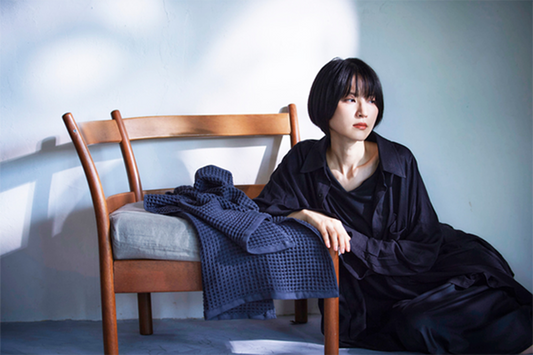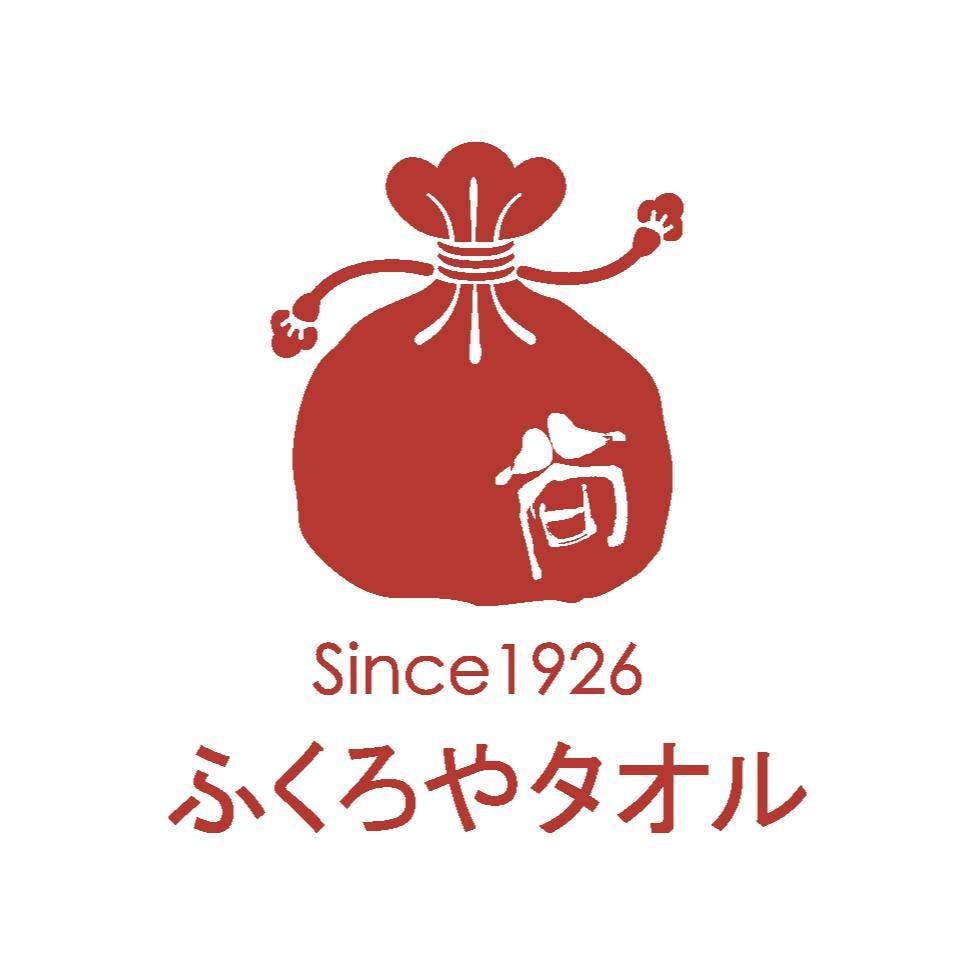
Fukuroya Towel|ふくろやややオル
Created in 1926, Japan's Quanzhou towel
In the 15th year of Taisho (1926), Tsunekichi Fukutani created the initial model of Fukutani Towel, which has been inherited and developed by his descendants. In recent years, Bag Valley Towel has not only carried out modern production, but also started some interesting and meaningful creative projects.
The most distinctive feature of Quanzhou towels is that they are made in the "after drying" method. "Drying" refers to the process of washing, bleaching and dyeing.
To make the cotton thread tighter and easier to weave, the thread is coated with wax. While weaving becomes easier, it makes the towel less absorbent.
Therefore, Quanzhou towels will be "dried" after they are made to wash away the wax of the towels and dye them in different colors.
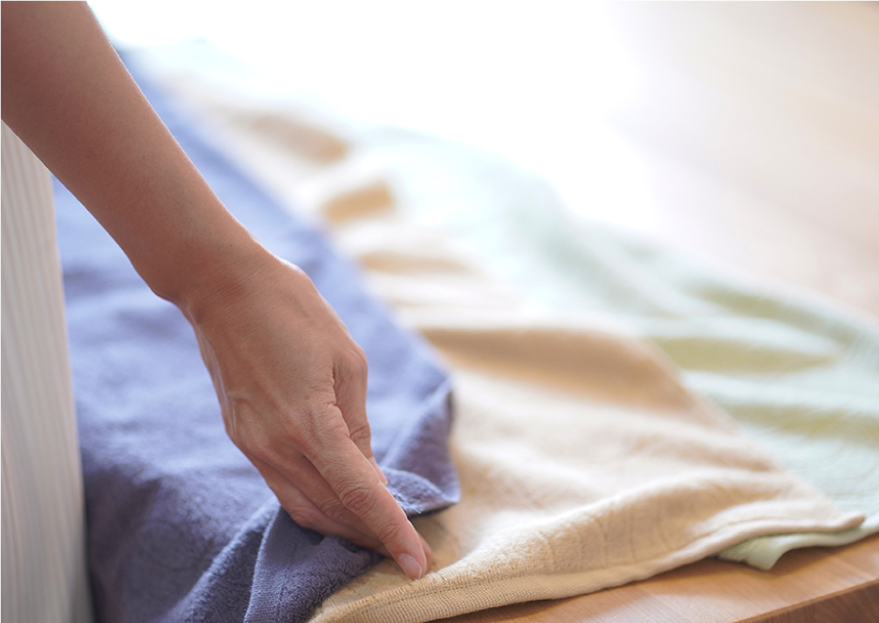
Regional technology from Osaka - Quanzhou towel
Cotton has been grown in southern Osaka (Senshu) since the end of the Edo period, and the cotton thread produced there is mainly used for hand wipes and yukata. In the 20th year of Meiji, Mr. Enjiro Satoi, after spending two years researching imported towels from Osaka, made a revolutionary improvement on the cotton loom, and successfully produced Japan's first cotton loom in what is now Izumisano City, Osaka Prefecture. towel. From then on, towels made in Japan in the same place were called " Quanzhou towels ".
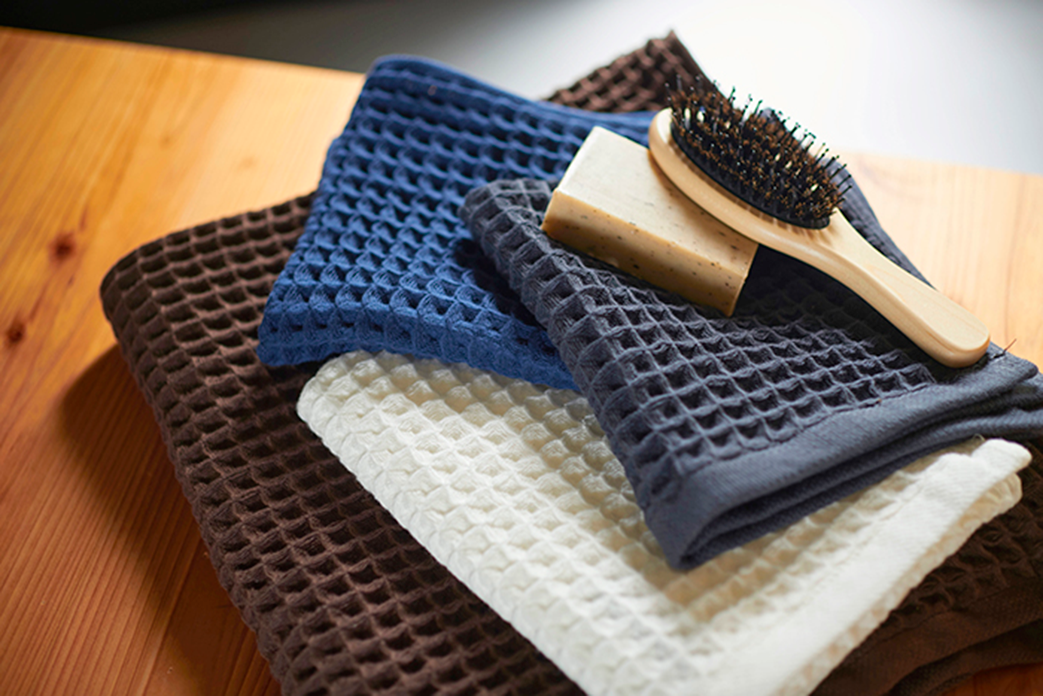
Quanzhou towel series
WASHI MATOU
A new generation of towels made using traditional craftsmanship and modern environmentally friendly technology, woven from Japanese paper and environmentally friendly materials.
Washi paper itself is made from tree bark, which is biodegradable, absorbent, quick-drying, and flexible.
Wabi-sabi style tones are easy to incorporate into every home.
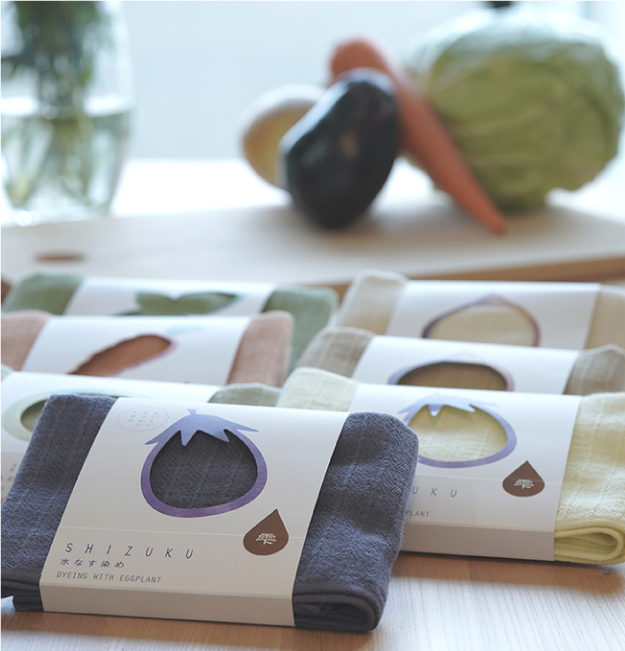
Quanzhou towel series
Shizuku Shizuku
Add natural color to your life. Senshu towels dyed with natural pigments from vegetables.
Shizuku means "rain" and "water drop" in Japanese. The name was changed in the hope that the towels produced would be moistened with the colors of nature.
It is dyed with pigments extracted from several vegetables rich in Osaka, and does not contain chemical ingredients.
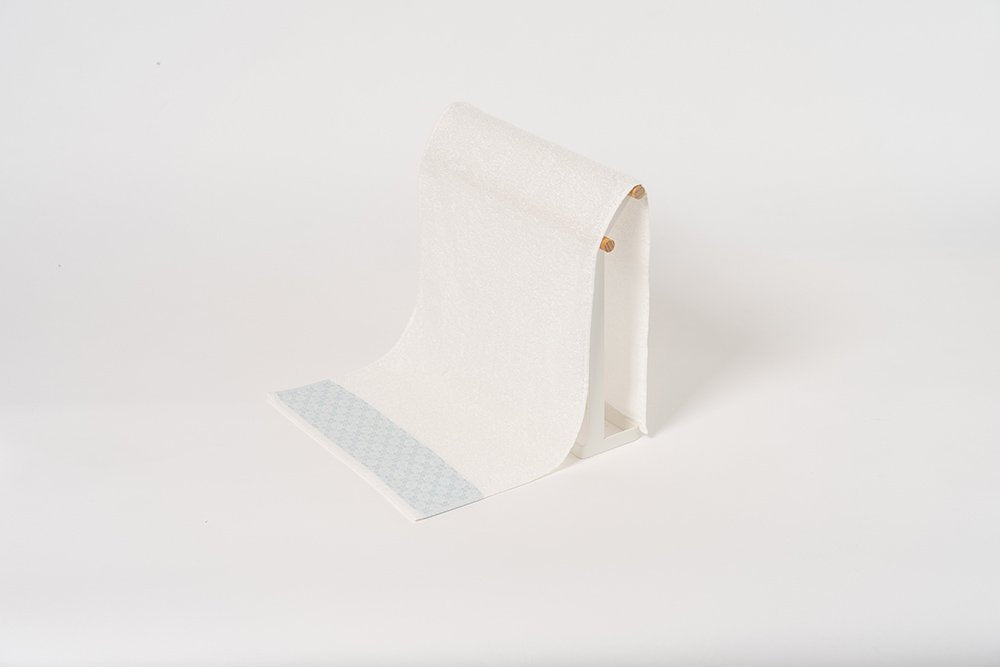
Quanzhou towel series
Fukuro Ori
Designed with traditional Japanese patterns, it is a bit nostalgic but epoch-making. Zao Seed combines traditional and contemporary designs, which can be easily integrated into Japanese families and daily life.
Tasteful colored threads are carefully woven in different patterns for a gentle feel.
Because the yarn is not stained with wax or paste, it absorbs water better than ordinary towels.
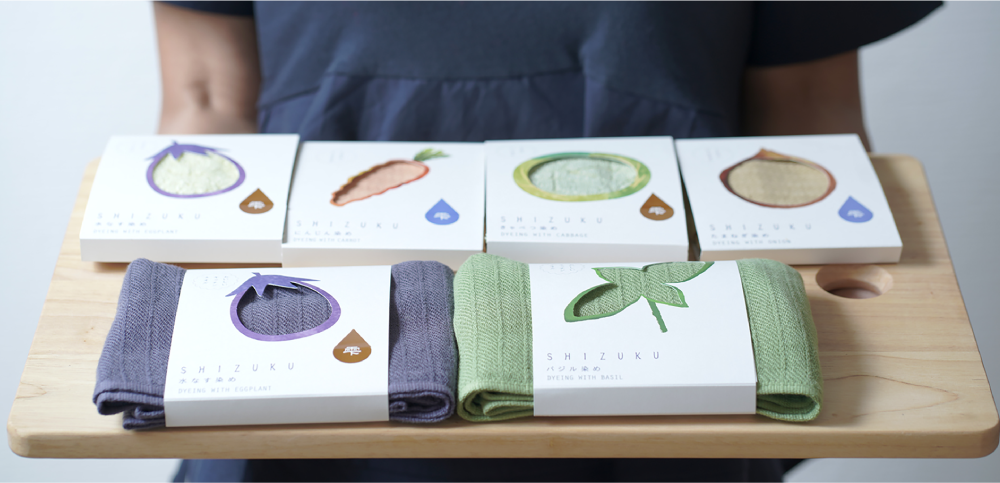
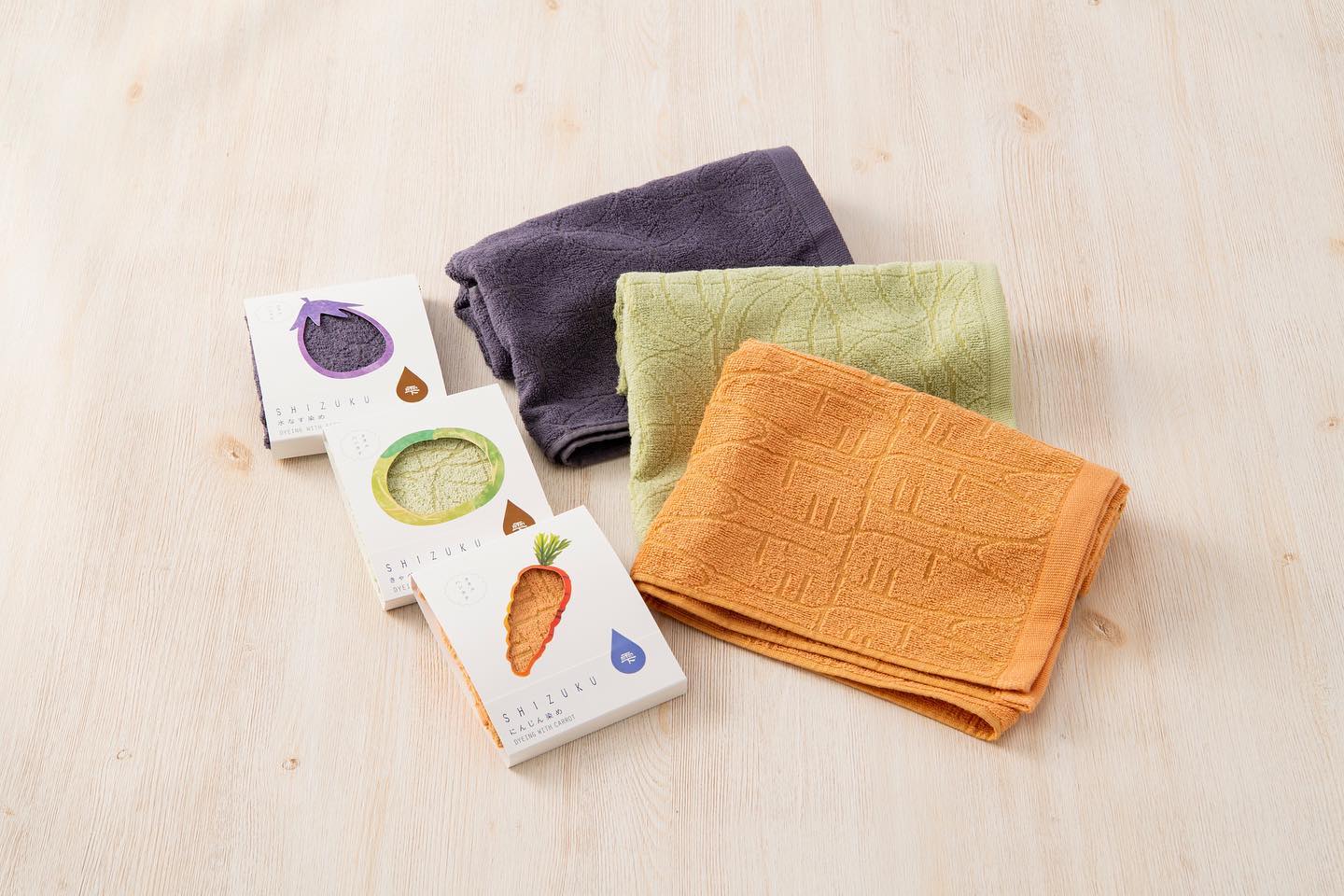
Shizuku Shizuku
Add natural color to your life. Senshu towels dyed with natural pigments from vegetables.
Shizuku means "rain" and "water drop" in Japanese. The name was changed in the hope that the towels produced would be moistened with the colors of nature.
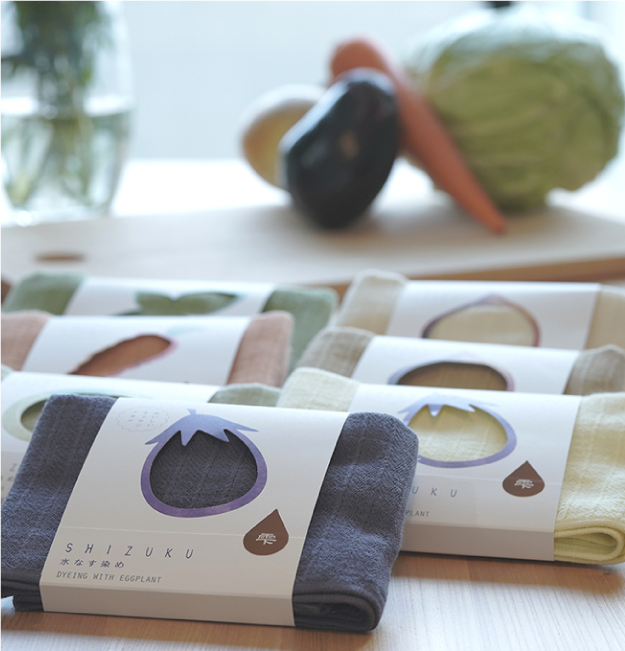
colors from nature
Shizuku sorted the leaves, seeds and skins of "Mizu eggplant", "Quenzhou onion", "Matsuba broccoli" and basil leaves, which are abundant in South Osaka, and extracted the pigment to make a dye. Then use the unique dyeing technique of Fuguya towel to show the beautiful color of wild vegetables on the towel, which will not fade easily.
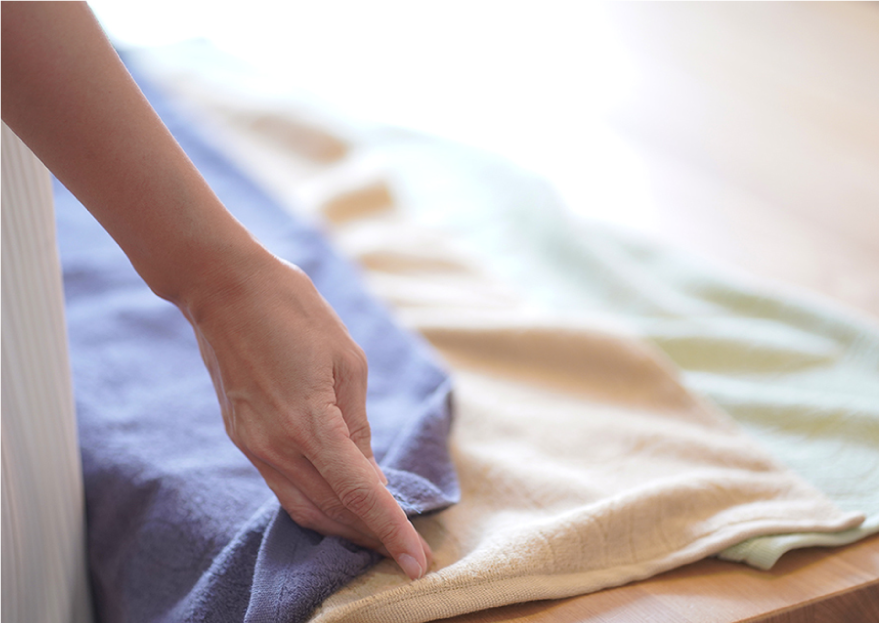
No bleach, fluorescent whitening agent, softener
Shizuku Shizuku towels do not use bleach, fluorescent whitening agent, or softener in the production process, reducing the use of chemical materials, which is not only good for the environment, but also closer to your skin.
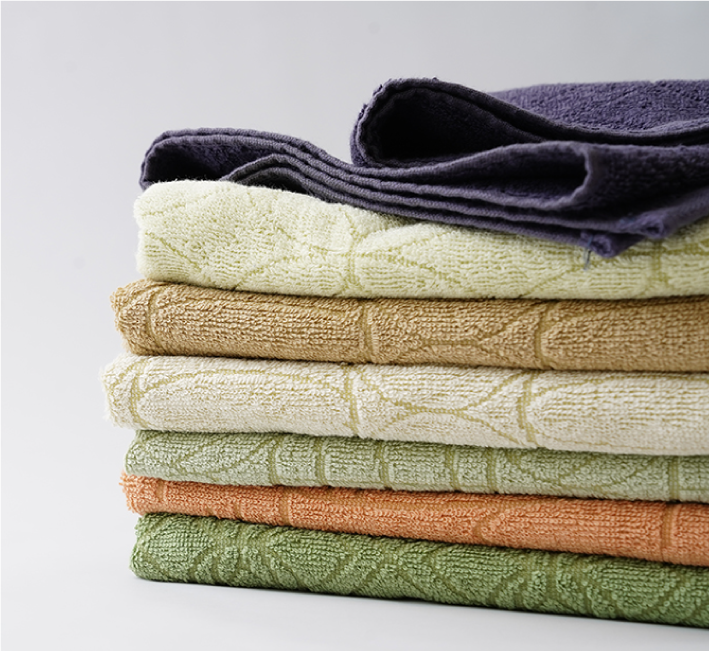
Enjoy the changes given by nature
Shizuku Shizuku towels are dyed with a unique technique, and the color of the towels is more durable than previous vegetable dyeing methods.
Dye extracted from vegetables abundant in South Osaka
-
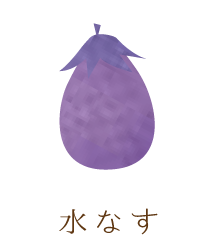
water eggplant
It grows in the south of Sakai City, Osaka Prefecture. The skin is so soft and juicy that it can be squeezed like running water, so it is called water eggplant. Generally, it is prepared by light soaking method and can be eaten raw.
Purple dye can be extracted from the eggplant skin, and yellow dye can be extracted from the pulp and core.
-
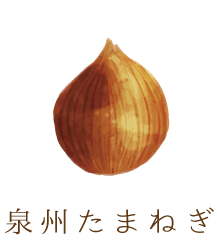
Quanzhou Onion
Quanzhou, Osaka is said to be the birthplace of Japanese onions and was once the largest producer of onions in Japan. The onion, a specialty of "Exit House Farm", is sweet and juicy, and can be eaten directly.
A brown dye can be extracted from the skin, and a unique onion yellow dye can be extracted from the pulp.
-

Matsuba Cabbage
It is grown in "Sagittarius Yanon" in Quanzhou, Osaka. It is sweet and delicious, and is chosen by many famous restaurants and Okonomiyaki shops.
The outer leaves are peeled off upon delivery to extract the crisp broccoli greens.
-
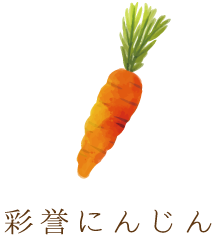
Caiyu Carrot
It is grown in Kishiwada City, Osaka, and its sweet taste is called "Shocking Carrot". And the extracted orange can also make you feel a sweetness.
-
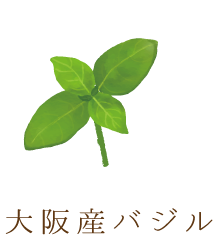
Basil leaves from Osaka
Basil specially made in Fujiidera City, Osaka Prefecture. Grown by Mr. Omura of basil.sc.
Leaves not selected for the basil paste are picked by hand to extract their sunny green color.
-
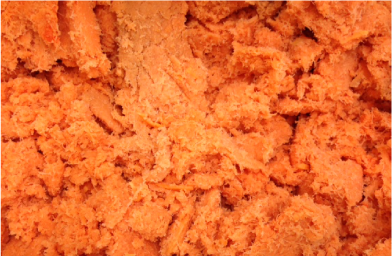
Reuse of Wild Vegetables
There are a lot of fresh and delicious fruits and vegetables produced in Osaka, but some of them are wasted because they are damaged or unsuitable for sale, and the excess parts are also cut off when the wok is received, or used as food waste when processed. Bag valley towels collect it and use it to extract various natural colors as dyes.
-
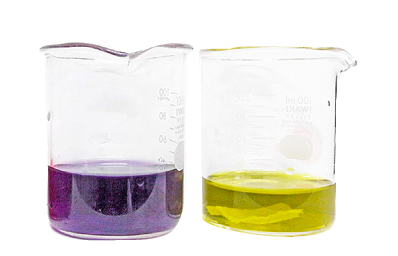
Tried and Tried Extraction Method
Experiments have been repeated many times with different parts such as skins, cores, leaves and pulp of fruits and vegetables. Finally, Fukuoya's factory successfully extracted the most original, brightest and most healing natural color dyes.
-
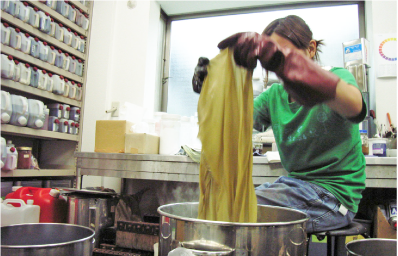
Unique Vegetable Dyeing Technology
Using a unique dyeing technology, towels can be dyed vegetable and fruit colors with solid and long-lasting performance without the use of bleaches, fluorescent agents and softeners. Compared with traditional vegetable dyeing, it is more durable and does not fade.
-
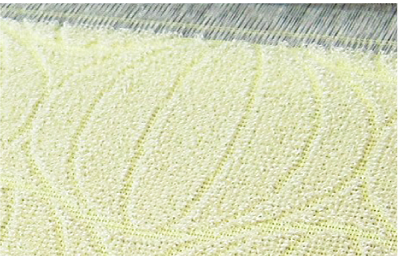
Light and absorbent Quanzhou towel
Quanzhou towels have good water absorption, are light and easy to hold. The factory can weave different types of terry fabrics with light texture and good texture, such as double-layer gauze.
Towel handkerchiefs are designed on the theme of various vegetables, and you can appreciate not only the colors of the vegetables, but also the patterns of the vegetables. -
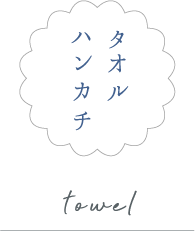
pocket square
Absorbent and light towels, woven with fruits and vegetables of corresponding colors and patterns. Easy to put in your pocket for later use.
-
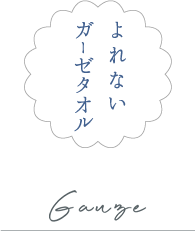
scarf
The gauze fabric with good water absorption is comfortable to the skin, and it is carefully woven so that it is not easy to wrinkle even after washing. Pocket size, easy to carry.
-
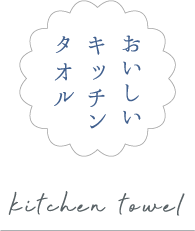
kitchen cloth
Highly absorbent towels for wiping hands and dishes, and in wet kitchens. The gauze fabric is comfortable to use and won't be loose.
-
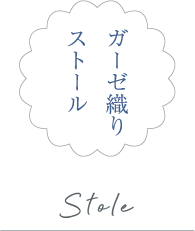
scarf
Soft tulle woven scarf that you can easily put on. Double layers of gauze are layered on top of each other for lightweight warmth. Beautiful finishes with a sense of sheer and a contrast between dark colors and woven patterns. Because it is made of cotton and rayon, it is generally machine washable.
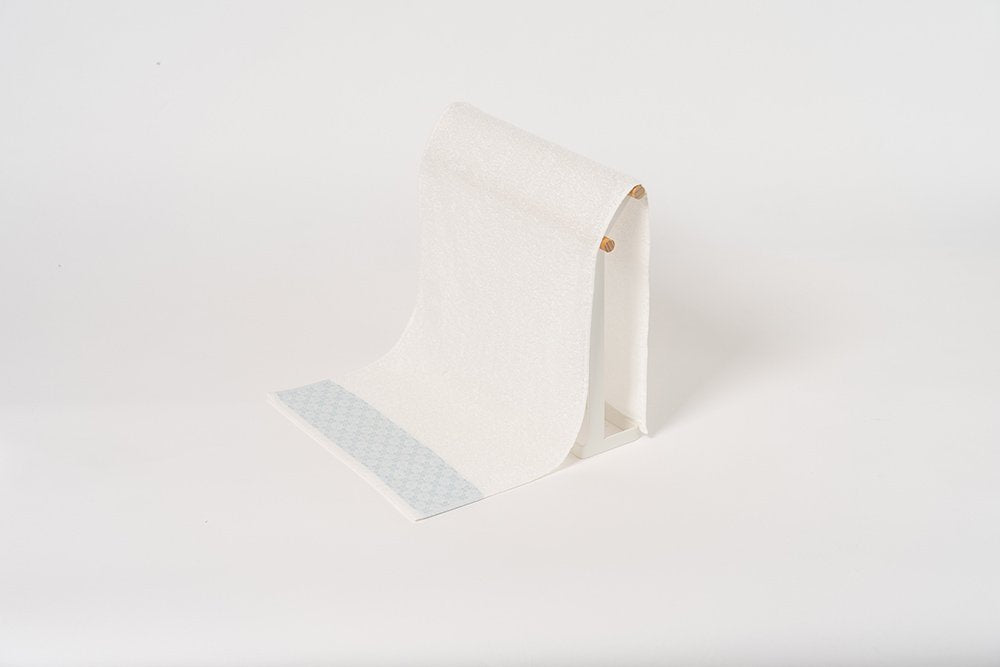
The most traditional Quanzhou towel
Fukuro Ori
The most distinctive feature of Quanzhou towels is that they are made in the "after drying" method.
"Drying" refers to the process of washing, bleaching and dyeing.
To make the cotton thread tighter and easier to weave, the thread is coated with wax. While weaving becomes easier, it makes the towel less absorbent.
Therefore, Quanzhou towels will be "dried" after they are made to wash away the wax of the towels and dye them in different colors.
This "post-drying" method not only makes Quanzhou towels cleaner and less impurity when they leave the factory, but also makes them have high water absorption performance and a more skin-friendly touch.
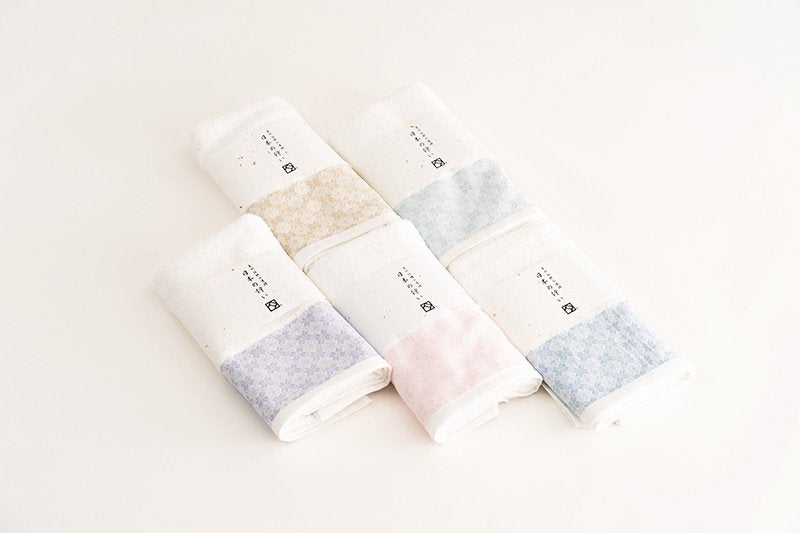
The most traditional Quanzhou towel
Combining traditional and contemporary
Designed with traditional Japanese patterns, it is a bit nostalgic but epoch-making. Zao Seed combines traditional and contemporary designs, which can be easily integrated into Japanese families and daily life.
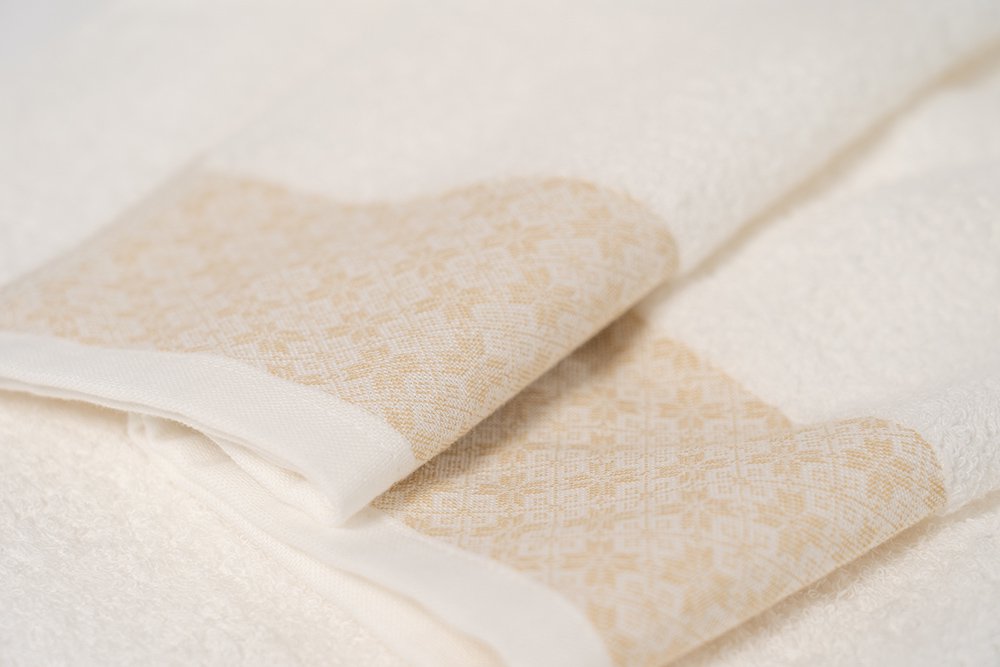
The most traditional Quanzhou towel
Enjoy delicate technology in your life
Quanzhou towels have a history of more than 130 years. Based on the traditional technology, the craftsmen of Izumisano, Quanzhou, Osaka continue to create new techniques, making the weaving technology more mature and delicate, and you can feel it in your daily life.
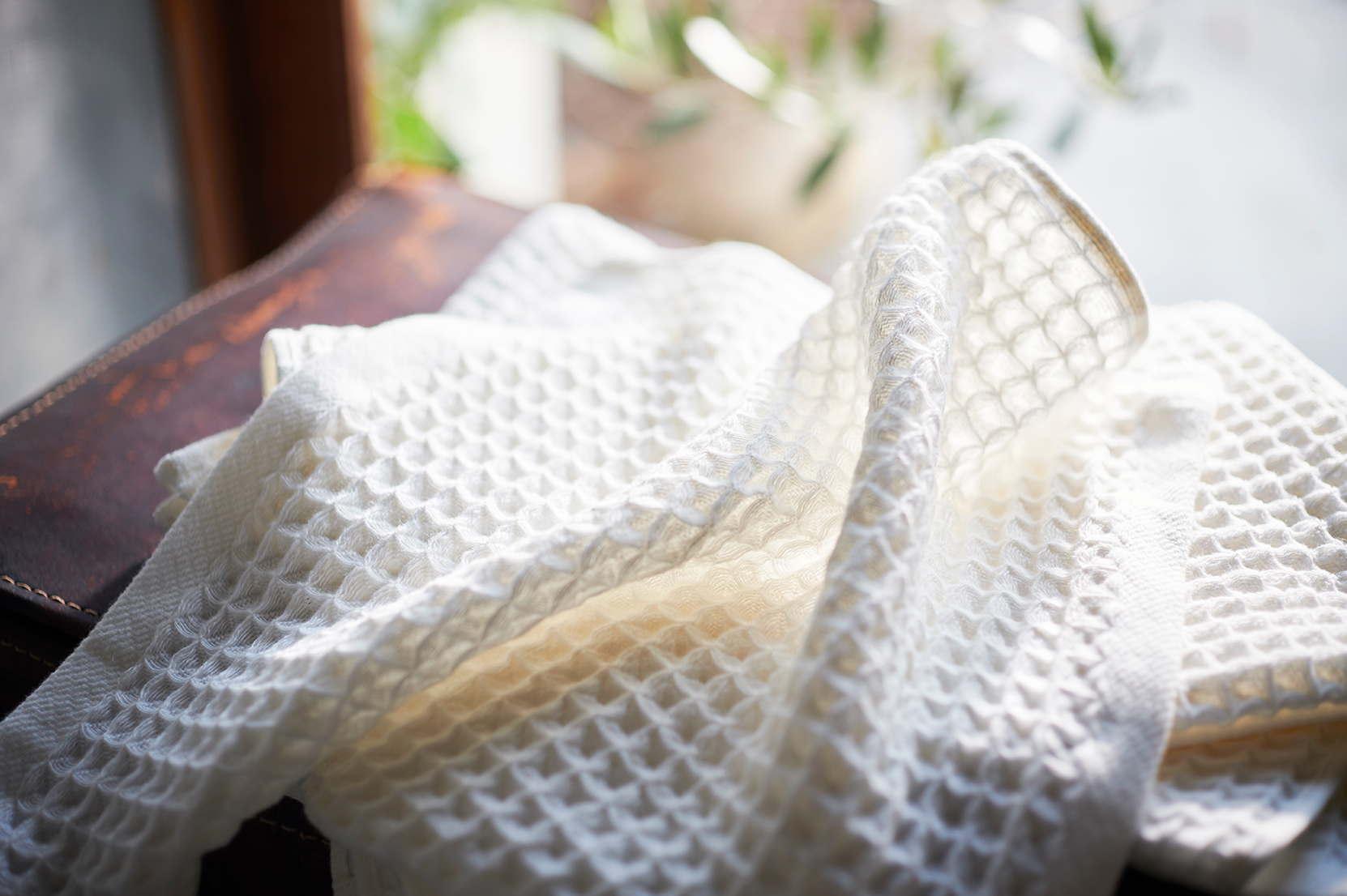
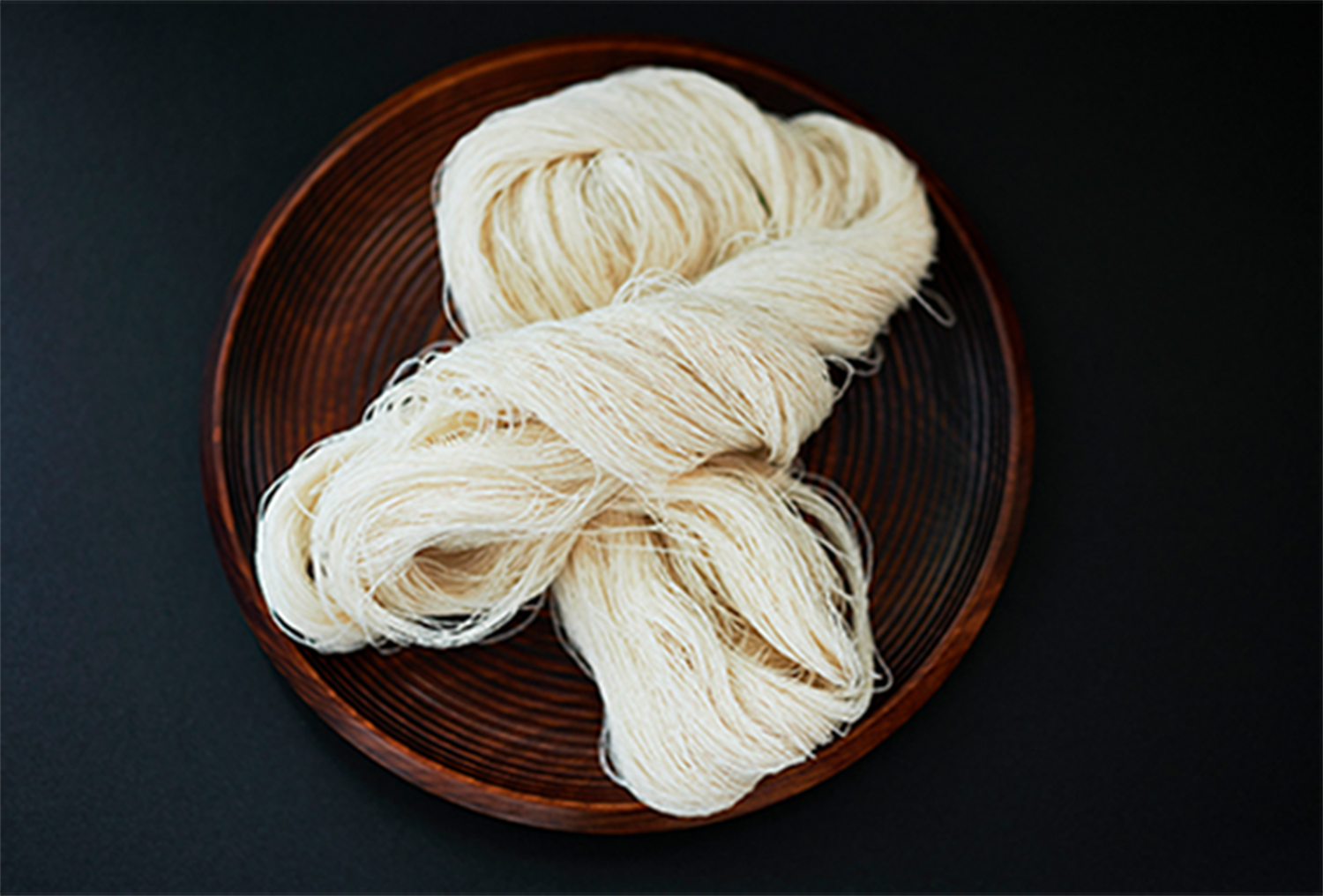
Senshu towels made of Japanese paper
WASHI MATOU
WASHI MATOU is a towel made from a blend of Japanese paper and natural materials.
Washi paper is made from the inner bark (periderm) of Japanese trees. The bark of this layer is naturally soft, and the towels woven into fibers are gentle and gentle on the skin. Its woody properties can reduce odor and keep you dry.
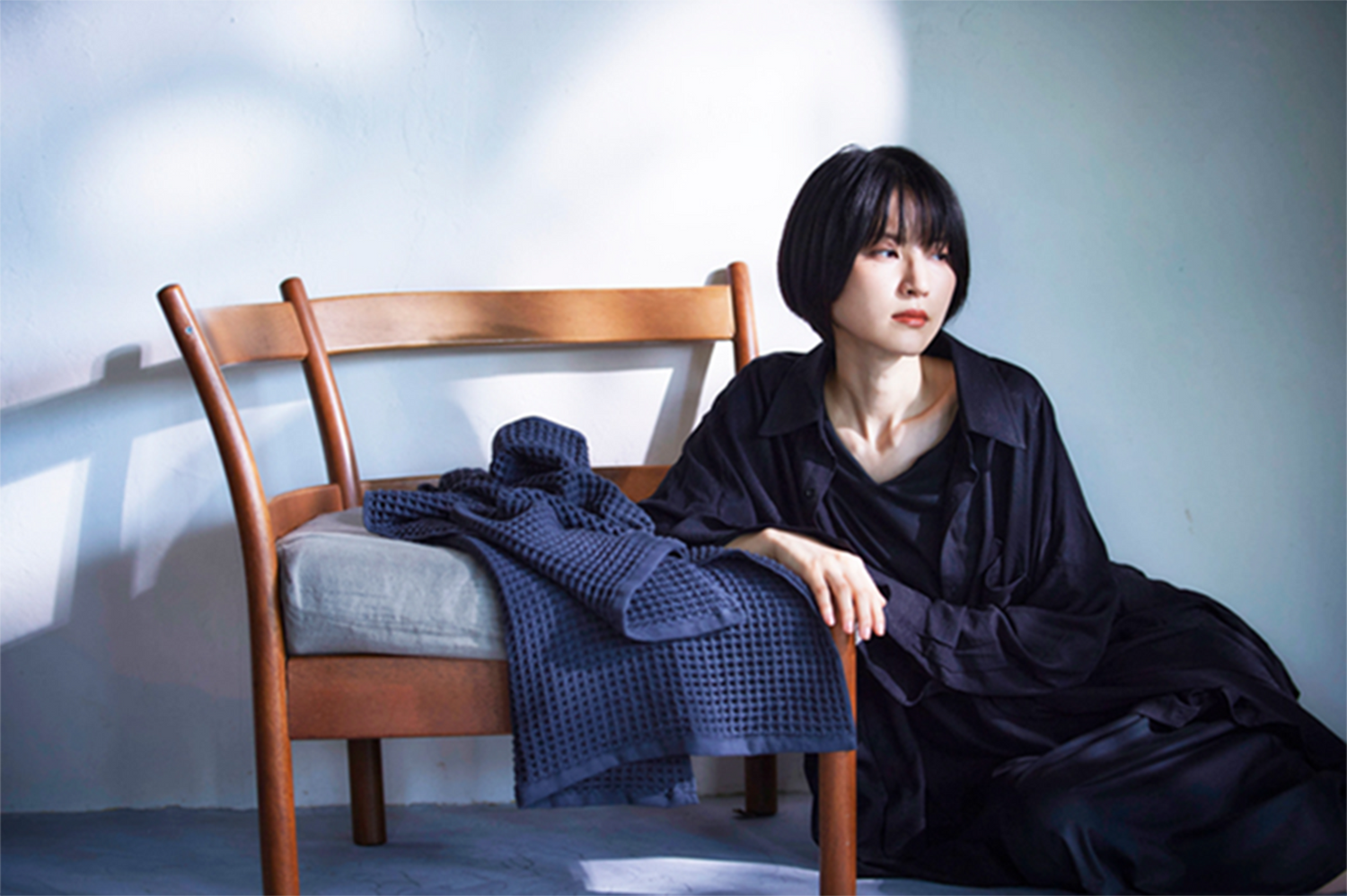
Senshu towels made of Japanese paper
wabi sabi style shades
The color selection of towels favors the wabi-sabi style, which can easily match the contemporary home design.
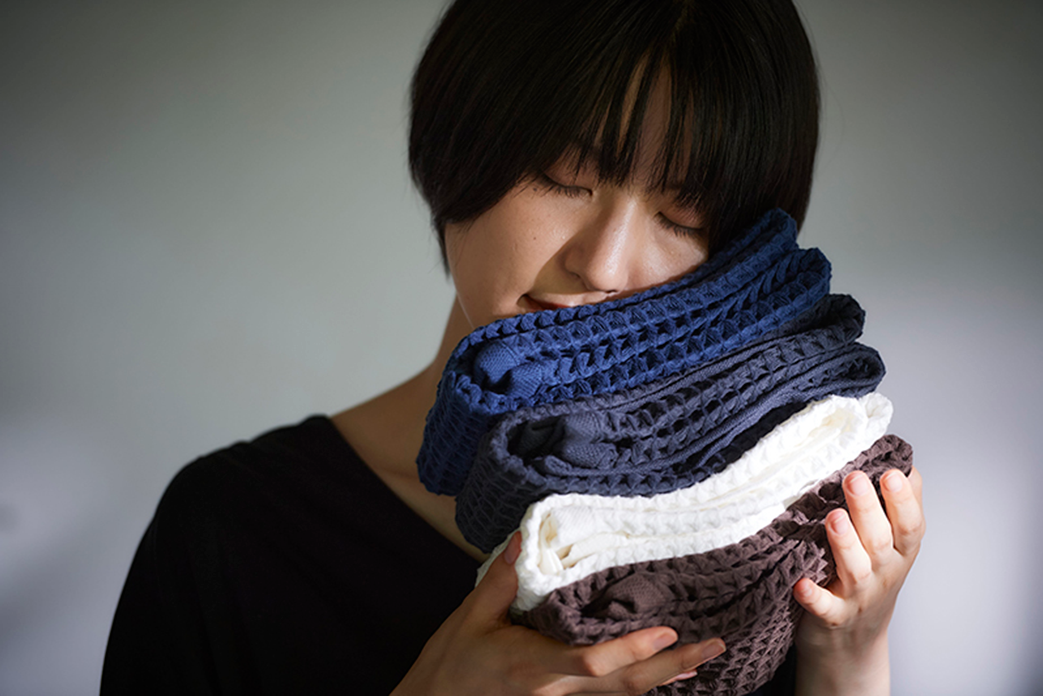
Senshu towels made of Japanese paper
Skin-friendly, soft and natural touch
The towel is woven in a waffle pattern, providing maximum and durable elasticity for maximum coverage of the skin. Washi paper has the property of controlling humidity. Its tree fibers can effectively absorb moisture when the humidity is high and moisturize when drying. Therefore, Washi towels combined with the traditional production method of Quanzhou towels make them not only absorbent but also quick-drying.
-
Shizuku Natural Dyed Towel (25x25cm)
Vendor:袋谷毛巾 FukuroyaRegular price HK$80.00Regular priceUnit price / per -
Shizuku Natural Dyed Towel (34x85cm)
Vendor:袋谷毛巾 FukuroyaRegular price HK$200.00Regular priceUnit price / per -
Shizuku Naturally Dyed Shawl (25x25cm)
Vendor:袋谷毛巾 FukuroyaRegular price HK$80.00Regular priceUnit price / per -
Shizuku Naturally Dyed Shawl (25x90cm)
Vendor:袋谷毛巾 FukuroyaRegular price HK$160.00Regular priceUnit price / per -
Fukuro Ori Fukuro Ori Japanese Quanzhou Towel (25x25cm)
Vendor:袋谷毛巾 FukuroyaRegular price HK$40.00Regular priceUnit price / per -
Fukuro Ori Japanese Quanzhou Towel (34x85cm)
Vendor:袋谷毛巾 FukuroyaRegular price HK$60.00Regular priceUnit price / per -
Fukuro Ori Japanese Quanzhou Towel (60x120cm)
Vendor:袋谷毛巾 FukuroyaRegular price HK$190.00Regular priceUnit price / per -
WASHI MATOU Japanese paper Quanzhou towel (34x35cm)
Vendor:袋谷毛巾 FukuroyaRegular price HK$80.00Regular priceUnit price / per -
WASHI MATOU Japanese paper Quanzhou towel (34x85cm)
Vendor:袋谷毛巾 FukuroyaRegular price HK$160.00Regular priceUnit price / per -
WASHI MATOU Japanese paper Quanzhou towel (60x135cm)
Vendor:袋谷毛巾 FukuroyaRegular price HK$430.00Regular priceUnit price / per
